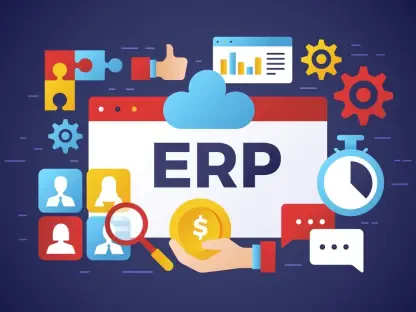In today’s digital landscape, enterprises manage a staggering average of 651 SaaS applications, a number that continues to climb with each passing month, highlighting the critical need for oversight. This rapid proliferation of subscription-based software, while driving innovation and flexibility, often comes with a hidden cost: unchecked spending and heightened security risks. Without a structured approach, organizations face ballooning expenses, shadow IT, and potential data breaches that can derail even the most robust business strategies. This guide dives into the critical need for SaaS governance, offering actionable best practices to rein in costs and mitigate risks effectively.
The importance of governance cannot be overstated in an era where SaaS spend per employee averages $4,830 annually. Beyond financial implications, the rise of unapproved applications contributes to nearly half of all security incidents tied to software usage. Establishing a governance framework ensures that every app aligns with business goals, protects sensitive data, and optimizes resources. This guide explores key strategies to achieve these outcomes, balancing control with the flexibility needed for innovation.
The Case for Robust SaaS Governance
SaaS governance serves as the backbone for managing subscription-based software across its lifecycle, from acquisition to retirement. It provides the policies and processes necessary to oversee a sprawling app ecosystem, ensuring visibility and accountability. In environments where new tools are adopted almost weekly, governance prevents chaos by aligning software usage with organizational priorities, curbing waste, and safeguarding against vulnerabilities.
Key benefits emerge from a well-implemented governance strategy. Financially, it tackles escalating costs by identifying redundant tools and unused licenses, directly impacting bottom lines. On the security front, it minimizes risks posed by shadow IT, where unsanctioned apps often bypass critical vetting. Additionally, governance enhances employee productivity by streamlining access to approved solutions and ensures that every SaaS investment supports long-term strategic objectives.
This multifaceted approach transforms SaaS from a potential liability into a competitive advantage. By addressing cost overruns, compliance gaps, and workflow inefficiencies, governance empowers organizations to scale their digital capabilities responsibly. The following best practices provide a roadmap for achieving these goals, tailored to the complexities of modern software environments.
Essential Best Practices for SaaS Governance
Identify and Monitor Your SaaS Inventory
Achieving full visibility into a SaaS portfolio is the foundation of effective governance. Many organizations underestimate their app count and spending by significant margins, often missing shadow IT and duplicate tools. Continuous monitoring uncovers these blind spots, enabling better decision-making around contract renewals and usage alignment.
Real-time discovery tools play a pivotal role in maintaining an accurate inventory. These solutions track applications across departments, revealing unauthorized software and highlighting opportunities for consolidation. Data indicates that companies often misjudge their SaaS expenditure by a factor of three, underscoring the value of persistent oversight in driving substantial savings.
Leverage AI for Smarter Governance
Artificial intelligence is revolutionizing SaaS management by delivering insights at unprecedented speed. AI tools can detect anomalies in license usage, flag potential compliance issues, and predict future needs with precision. This capability allows governance teams to stay ahead of cost overruns and emerging threats as portfolios expand.
Integrating AI into governance frameworks yields proactive benefits, from identifying unused subscriptions to automating risk assessments. For instance, a multinational firm recently used machine learning to uncover dormant licenses, slashing annual costs by a notable percentage. Such technology ensures that governance remains agile and responsive to dynamic business demands.
Integrate AI-Native SaaS Applications Responsibly
The emergence of AI-native tools introduces both innovation and unique risks, including data privacy concerns and algorithmic bias. Governance must adapt by establishing clear policies for data handling, vendor accountability, and ethical considerations. Without such measures, organizations risk unintended consequences from unchecked AI adoption.
A practical example illustrates this balance: a tech company implemented strict guidelines before deploying an AI-driven analytics platform, ensuring data inputs were anonymized and bias was monitored. This approach preserved innovation while safeguarding against ethical pitfalls, demonstrating that governance can support cutting-edge tools without compromising integrity.
Build Sustainability into Software Procurement
Sustainability has risen as a key priority for many organizations, influencing SaaS procurement decisions. Governance frameworks can support environmental, social, and governance (ESG) goals by evaluating vendors based on energy efficiency and long-term viability. This alignment not only reduces ecological impact but also strengthens corporate responsibility.
Consider a global retailer that prioritized eco-friendly SaaS providers in its governance criteria, reducing its carbon footprint while meeting stakeholder expectations. Embedding sustainability into procurement processes ensures that software choices reflect broader organizational values, future-proofing investments in an increasingly conscientious market.
Standardize Your Software Portfolio
Standardizing a SaaS stack minimizes complexity by focusing on a set of preferred tools, reducing shadow IT and easing administrative burdens. This practice cuts costs by eliminating overlapping applications and simplifies security management. A streamlined portfolio also enhances user experience through consistency across teams.
A notable case involves a large enterprise that partnered with a SaaS management platform to consolidate its app ecosystem, saving millions in redundant licensing fees. By rationalizing its software titles, the company not only optimized spend but also improved employee access to approved tools, showcasing the tangible impact of standardization.
Rightsize and Rationalize Your Portfolio
Rightsizing ensures that license counts match actual usage, while rationalization removes unnecessary or redundant applications from the stack. Together, these strategies curb SaaS sprawl, lower expenses, and reduce potential entry points for security threats. They are essential for maintaining an efficient and secure software environment.
An organization in the financial sector, for example, conducted a thorough review of its SaaS subscriptions, canceling unused apps and adjusting license tiers to reflect real demand. This exercise resulted in significant cost reductions and a smaller attack surface, proving that disciplined portfolio management delivers measurable outcomes.
Communicate Transparently Across the Organization
Effective governance hinges on employee understanding and buy-in, which requires transparent communication. Clearly articulating the reasons behind policies builds trust and encourages adherence to approved practices. Regular updates on cost savings, security enhancements, and app availability keep stakeholders engaged and informed.
A manufacturing firm demonstrated this principle by sharing quarterly reports on governance achievements, such as reduced spending and thwarted cyber risks. This openness fostered a culture of compliance, as employees saw direct benefits from following guidelines, highlighting communication as a cornerstone of successful implementation.
Final Thoughts on SaaS Governance
Reflecting on the journey through these best practices, it becomes evident that SaaS governance has evolved into a cornerstone of organizational resilience. Each strategy, from inventory monitoring to transparent communication, contributes to a framework that tames the chaos of sprawling app ecosystems. The impact is clear: reduced costs, fortified security, and aligned investments shape a more sustainable digital landscape.
Looking ahead, the next steps involve adopting tailored governance models—whether centralized, decentralized, or hybrid—to match unique cultural and operational needs. Leveraging SaaS management platforms offers a practical path to automate visibility and enforcement, ensuring scalability. Prioritizing employee engagement and consistent policy application remains critical to sustaining these gains, paving the way for enduring efficiency and risk control.









